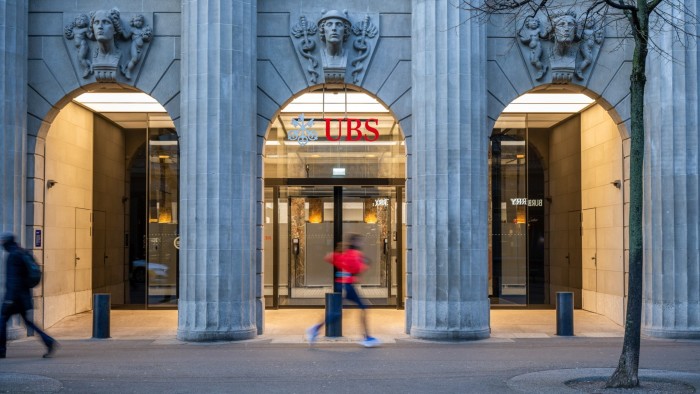Unlock the Editor’s Digest for free
Roula Khalaf, Editor of the FT, selects her favourite stories in this weekly newsletter.
Where do you go once you’ve reached the top of a mountain? Swiss bank UBS has climbed so far ahead of most of its European rivals that they are out of sight. For its stock to go anywhere at all from here, it needs to convince investors that there are higher summits to scale.
Annual results on Tuesday highlighted the challenge facing UBS and its boss Sergio Ermotti: profits blasted through expectations, but its shares slid almost 6 per cent, making it the worst performer on the Swiss Market index. It is one of the least popular big European banks among sell-side analysts, with just half rating it a “buy”.
Some of the pressures are outside the bank’s control. Swiss regulators are working on new “too big to fail” rules that will probably lead to increased capital requirements. UBS is pushing hard for a “proportionate” response, warning that punitive restrictions would make it uncompetitive at a time when other big markets are moving in the opposite direction.
The uncertainty around capital rules will continue to be an overhang for the first half of this year at least. But even if it is resolved in UBS’s favour, the bank still has to prove that it can build on its current position if it wants to extend its already-rich valuation.
With shares trading at 1.4 times tangible book value, it carries a substantial premium to European rivals, thanks mainly to its enviable position in wealth management. Instead of looking over its shoulder at the rest of Europe, UBS would prefer to narrow the gap on US rivals such as Morgan Stanley, which trades more than three times book. That was the argument made by activist investor Cevian Capital when it first backed the company in 2023.
One obvious way to do that would be to squeeze more profit out of the US wealth market, which in the fourth quarter generated almost half of wealth management revenues but less than 20 per cent of underlying pre-tax profit.
The business is too focused on ultra-high net worth customers who are particularly expensive to serve, and it has been grappling with rising compensation costs and poor execution of previous investment projects.
UBS says improving the division is a priority, and has outlined plans to bring the profit margin to about 15 per cent by 2027. However, that would only get it back to the average level it was at between 2019 and 2023, albeit hopefully on a more sustainable basis. Morgan Stanley’s wealth management margins are almost double that.
Like his wealthy clients, Ermotti has luxury problems. Most European bank chiefs would love to be even thinking about how to hold on to a valuation of 1.4 times book. But it can’t be easy conquering one mountain only to see a bigger one poking through the clouds.
nicholas.megaw@ft.com
https://www.ft.com/content/a7cc53b3-5e1b-478c-b181-76016a73578c


